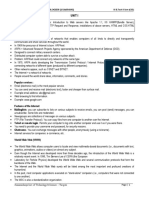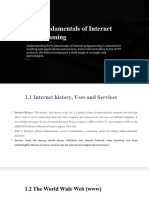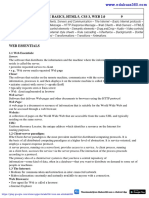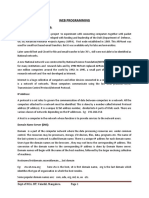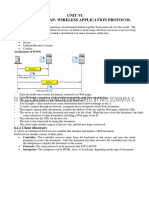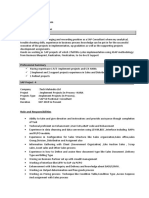0% found this document useful (0 votes)
23 views4 pagesWeb Essentials
The document provides an overview of web essentials, focusing on the Internet, web clients, and web servers. It explains key concepts such as internet protocols, the World Wide Web, HTTP communication, and the functions of web clients and servers. Additionally, it discusses server configuration, logging, access control, and security measures for web servers.
Uploaded by
Caleb PhiriCopyright
© © All Rights Reserved
We take content rights seriously. If you suspect this is your content, claim it here.
Available Formats
Download as PDF, TXT or read online on Scribd
0% found this document useful (0 votes)
23 views4 pagesWeb Essentials
The document provides an overview of web essentials, focusing on the Internet, web clients, and web servers. It explains key concepts such as internet protocols, the World Wide Web, HTTP communication, and the functions of web clients and servers. Additionally, it discusses server configuration, logging, access control, and security measures for web servers.
Uploaded by
Caleb PhiriCopyright
© © All Rights Reserved
We take content rights seriously. If you suspect this is your content, claim it here.
Available Formats
Download as PDF, TXT or read online on Scribd
/ 4










